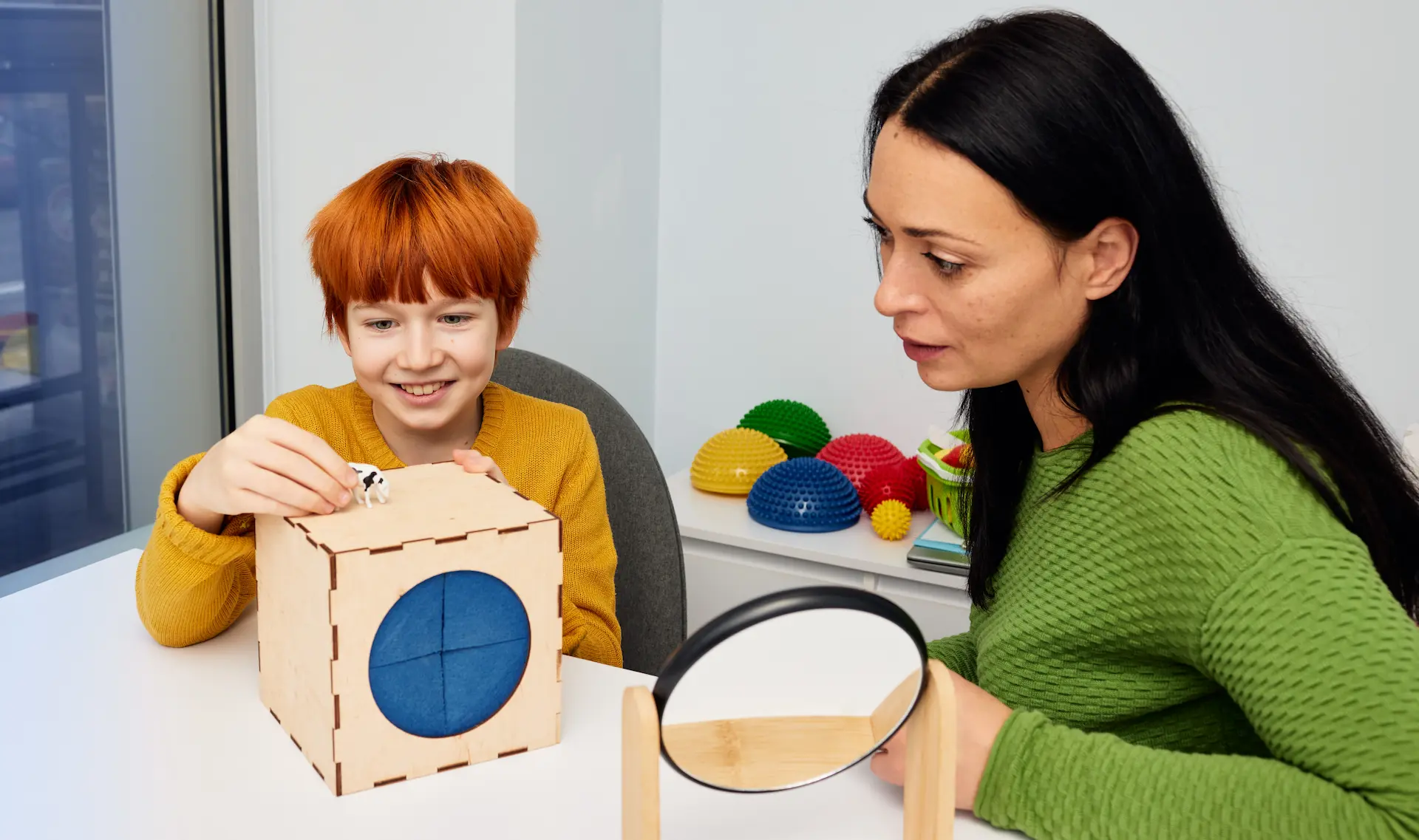If you work in Applied Behavior Analysis (ABA), you’ve likely heard parents or schools ask: “Can ABA help with ADHD?” While ABA is often linked to autism, its principles can also support children and teens with Attention Deficit Hyperactivity Disorder (ADHD).
The short answer is medication remains the treatment with the strongest evidence for ADHD symptoms. But behavioral interventions can help too—without the chemical side effects—especially when they target specific challenges like focus, transitions, or daily routines. ABA can complement ADHD treatment teaching skills that medication alone may not address.
ABA Can Help With ADHD in Daily Life
ABA focuses on behavior in context: identifying triggers and shaping replacement skills. For children with ADHD, that can look like:
- More on-task time: Breaking assignments into small steps, pairing them with quick feedback, and reinforcing focus.
- Less conflict and fewer meltdowns: Preparing for transitions, rewarding calm hand-offs, and reducing escalation points at home or school.
- Maintaining routines: Teaching morning or homework routines step by step, with prompts and reinforcement faded over time.
In daily life, these small, repeated wins can ease the burden on families and reduce stress in the classroom.
How Providers Translate ABA to ADHD Needs
As the science of behavior, ABA can address ADHD as long as the plan is built around the individual’s needs.
A typical ABA process for ADHD includes:
- Assessment and goal setting: Understanding the learner’s challenges and deciding what “better” looks like, whether that’s easier homework routines, fewer classroom interruptions, or improved organization.
- Functional behavior assessment: Identifying what triggers certain behaviors, and what’s keeping them going.
- Tailored interventions: Translating those findings into actions that fit ADHD, such as:
- Token systems to reward task completion.
- Social skills training for better peer interactions.
- Self-monitoring tools to increase awareness and control.
- Visual schedules and timers for time management.
- Reinforcement that sticks: ADHD often makes waiting for delayed rewards tough. Immediate praise, privileges, or small rewards help motivation stay high.
Limitations of ABA for ADHD
ABA can help children and teens with ADHD build better routines and reduce conflicts, but it isn’t without challenges like:
- Time commitment: ABA requires frequent sessions and consistent follow-through, which some families find difficult to sustain.
- Expert oversight: A certified behavior analyst needs to design and guide the plan. Without that support, gains don’t last.
- Real-life carryover: To achieve progress, skills practiced in therapy have to transfer to classrooms and homes.
- Not one-size-fits-all: Some learners respond quickly, while others need repeated adjustments to see benefits.
- Costs and coverage: Insurance may not fully cover ADHD treatment under ABA, leaving families to navigate financial decisions.
- Research still developing: While short-term improvements are well documented, long-term outcomes of ABA for ADHD are still being studied.
Being clear about these realities avoids overpromising ABA as a solution to ADHD symptoms. It also explains why tracking progress week by week is important.
Measuring Daily ADHD Behavior Through ABA
Families and insurers don’t simply want to know that a child sat longer during math, they want proof that changes are happening consistently. That’s why tracking behaviors matters.
Here are some example behavior metrics you can monitor each week when working with ABA for ADHD:
When behavior data are collected in real time and reviewed weekly, you can show exactly what’s changing, and those improvements don’t get lost. A reliable ABA data tool helps make that possible, turning everyday observations into patterns that can support care for ADHD patients.
Putting ABA Data to Work For ADHD and Beyond
Behavioral therapy can’t replace medication, and alone, it won’t solve the challenges that come with ADHD. But families will notice progress in the smallest ways—a calmer morning routine, or a child who finishes homework without reminders.
ABA can make those moments happen. And Motivity helps you capture those wins. It turns daily ADHD-related behavior data into a clear story of gains that’s easy to share with parents, teachers, and anyone on the child’s team.
Because when everyone can see progress, they can build on it together.
Request a personalized walkthrough of how Motivity supports ADHD-focused ABA care and makes tracking progress easier.


